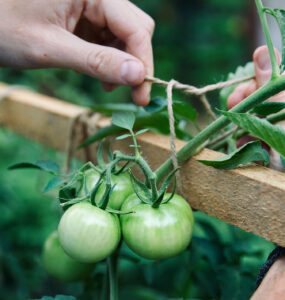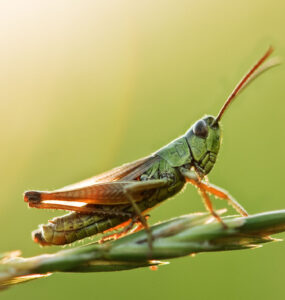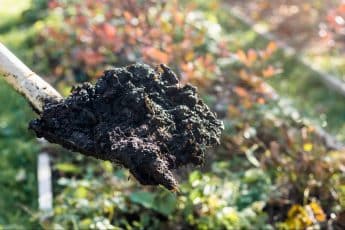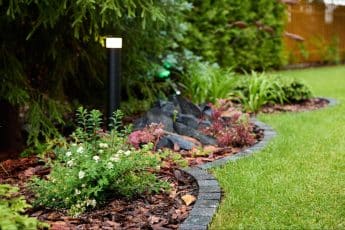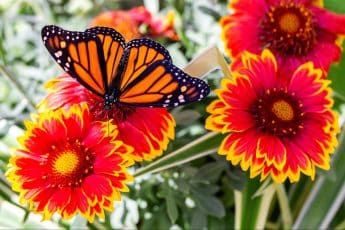Stink Bugs
by Rob Sproule
An alarming pest is popping up across Canada in increasingly greater numbers. Stink bugs are easy to spot and cluster quickly into frightening large numbers. The good news is that, in Alberta at least, there’s nothing to be alarmed about.
There are dozens of stink bugs in North America, with impact ranging from small nuisance to agricultural nightmare. So far, our ever-helpful Canadian winters have kept the worst of the lot, the Brown Marmorated Stink Bug, from ranging north of Southern Ontario. We have the “Twice-Stabbed” Stink bug, or “Wee Harlequin” bug, which is one of the least destructive species.
Don’t be alarmed to find a cluster of “stinkers” in your garden. Unless they’re swarming in droves, they won’t do significant damage to your plants.
Identification
Stink bugs come in a range of colours but the same tell-tale shape. Their bodies are shaped like a Norman-Shield, giving them their alias “Shield Bug.” You’ll know them when you see them, and there will usually be more close by.
While the brown stink bug is infamous in warmer area, the “Twice-Stabbed” Stink Bug is common across the Prairies. Unless they’re in massive numbers in your yard, they won’t do significant damage to most types of plants so don’t push the panic button.
Life Cycle
Stink bugs don’t like the cold, and will huddle in large groups amongst garden debris, near their food source, through the winter. Emerging with the warm weather, they’ll start feeding and laying eggs as soon as possible.
You’ll find the neatly aligned, yellow eggs attached to seed pods or the undersides of leaves starting around July. The nymphs are round with a black front half and orange back half. They love echinacea, asparagus, sunflowers, anything yellow, and a lot of other perennials, shrubs, and trees.
Damage
Using a long, needle-like appendage that they keep tucked between their legs when not feeding, most Stink Bugs liquify leaf cells and suck up the resulting slurry. They like a lot of company and, as soon as they find a food source, release pheromones to attract as many friends as possible. When enough join the party, serious damage ensures. Brown Marmorated Stinkers have caused massive damage to apple orchard and crops across the American North East.
Twice-Stabbed Stinkers are known as Seed Predators, and prefer seed pods over leaves. While this is good news for your perennials, it’s not so good if they’re on your peas or raspberries.
Control
With most species being native to East Asia, Stinkers don’t have a lot of Canadian predators. That’s changing, and birds, ladybugs, and wasps are starting to eat them despite the unpleasant taste their stinky juices cause.
You shouldn’t have to resort to pesticides for Twice-Stabbed Stinkers. They’re generally only after seeds, and in small numbers you’ll barely notice the damage.
If you decide to pick them by hand, wear gloves as, albeit shy, they will bite if threatened. The sides of their shield-shaped back can also irritate skin if you touch them. Expect them to discharge their stinky secret weapon; it smells a little like cilantro, which people either love or hate!
Stinkers thrive in messiness, but don’t assume that your yard is messy just because they turn up. Weeds like thistle are their favourite habitat, and will often jump into a yard or farm field from property line weeds that aren’t cleared up. They outbreak will be short-lived if you give your yard a regular fall clean-up.
Check for eggs near the seeds pods and leaves you’ve seen them on from midsummer on. In the Fall, clear organic debris from around the area. They overwinter as adults and clustered together, so removing plant litter will often reveal masses of them under old leaves, mulch, or stones.



